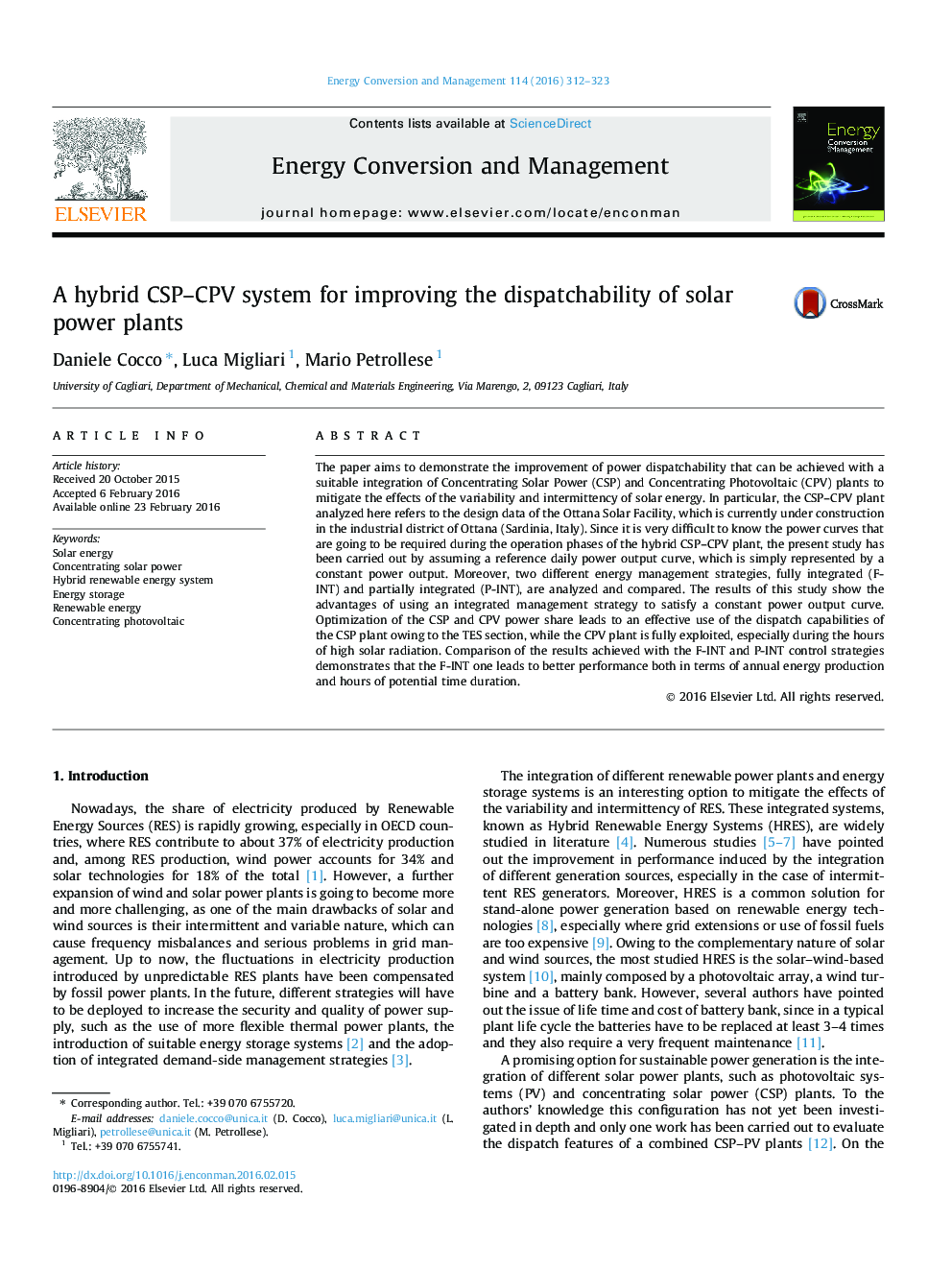| Article ID | Journal | Published Year | Pages | File Type |
|---|---|---|---|---|
| 7161092 | Energy Conversion and Management | 2016 | 12 Pages |
Abstract
The paper aims to demonstrate the improvement of power dispatchability that can be achieved with a suitable integration of Concentrating Solar Power (CSP) and Concentrating Photovoltaic (CPV) plants to mitigate the effects of the variability and intermittency of solar energy. In particular, the CSP-CPV plant analyzed here refers to the design data of the Ottana Solar Facility, which is currently under construction in the industrial district of Ottana (Sardinia, Italy). Since it is very difficult to know the power curves that are going to be required during the operation phases of the hybrid CSP-CPV plant, the present study has been carried out by assuming a reference daily power output curve, which is simply represented by a constant power output. Moreover, two different energy management strategies, fully integrated (F-INT) and partially integrated (P-INT), are analyzed and compared. The results of this study show the advantages of using an integrated management strategy to satisfy a constant power output curve. Optimization of the CSP and CPV power share leads to an effective use of the dispatch capabilities of the CSP plant owing to the TES section, while the CPV plant is fully exploited, especially during the hours of high solar radiation. Comparison of the results achieved with the F-INT and P-INT control strategies demonstrates that the F-INT one leads to better performance both in terms of annual energy production and hours of potential time duration.
Keywords
Related Topics
Physical Sciences and Engineering
Energy
Energy (General)
Authors
Daniele Cocco, Luca Migliari, Mario Petrollese,
